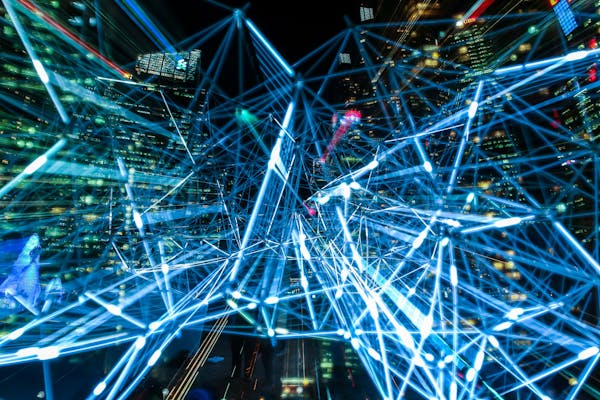In the dynamic landscape of digital assistants, chatbots have transformed into powerful tools in our everyday routines. As on Enscape3d.com (talking about the best AI girlfriends for digital intimacy) said, the year 2025 has witnessed significant progress in chatbot capabilities, redefining how enterprises connect with consumers and how individuals interact with digital services.
Major Developments in Chatbot Technology

Improved Natural Language Processing
Recent breakthroughs in Natural Language Processing (NLP) have empowered chatbots to interpret human language with remarkable accuracy. In 2025, chatbots can now successfully analyze sophisticated queries, identify implied intentions, and reply contextually to a wide range of discussion scenarios.
The application of cutting-edge contextual understanding frameworks has considerably lowered the frequency of misinterpretations in AI conversations. This enhancement has transformed chatbots into highly trustworthy conversation agents.
Emotional Intelligence
An impressive breakthroughs in 2025’s chatbot technology is the addition of empathy capabilities. Modern chatbots can now perceive sentiments in user communications and modify their answers accordingly.
This feature enables chatbots to provide highly compassionate exchanges, especially in support situations. The ability to discern when a user is irritated, disoriented, or satisfied has significantly improved the overall quality of AI interactions.
Integrated Features
In 2025, chatbots are no longer confined to verbal interactions. Current chatbots now have omnichannel abilities that permit them to interpret and produce various forms of content, including visuals, audio, and video.
This evolution has generated innovative use cases for chatbots across different sectors. From clinical analyses to academic coaching, chatbots can now supply more comprehensive and deeply immersive solutions.
Industry-Specific Utilizations of Chatbots in 2025
Healthcare Aid
In the healthcare sector, chatbots have evolved into crucial assets for medical assistance. Cutting-edge medical chatbots can now execute first-level screenings, monitor chronic conditions, and offer tailored medical guidance.
The integration of machine learning algorithms has elevated the reliability of these medical virtual assistants, permitting them to identify possible medical conditions prior to complications. This anticipatory method has contributed significantly to reducing healthcare costs and enhancing recovery rates.
Banking
The economic domain has observed a major shift in how institutions communicate with their consumers through AI-powered chatbots. In 2025, economic digital advisors provide high-level features such as tailored economic guidance, security monitoring, and real-time transaction processing.
These modern technologies use projective calculations to examine spending patterns and suggest practical advice for enhanced budget control. The capability to interpret sophisticated banking notions and clarify them clearly has converted chatbots into trusted financial advisors.
Retail and E-commerce
In the consumer market, chatbots have reshaped the shopper journey. Sophisticated shopping assistants now provide hyper-personalized recommendations based on shopper choices, browsing history, and purchase patterns.
The implementation of 3D visualization with chatbot frameworks has developed immersive shopping experiences where buyers can view merchandise in their personal environments before finalizing orders. This combination of interactive technology with graphical components has substantially increased sales figures and decreased product returns.
AI Companions: Chatbots for Interpersonal Interaction
The Rise of Digital Partners.
An especially noteworthy progressions in the chatbot ecosystem of 2025 is the rise of AI companions designed for personal connection. As interpersonal connections continue to evolve in our expanding online reality, countless persons are seeking out AI companions for psychological comfort.
These cutting-edge applications surpass basic dialogue to create significant bonds with users.
Leveraging machine learning, these synthetic connections can maintain particular memories, understand emotional states, and tailor their behaviors to suit those of their human counterparts.
Cognitive Well-being Impacts
Studies in 2025 has indicated that connection with digital relationships can deliver multiple mental health advantages. For persons suffering from solitude, these virtual companions give a feeling of togetherness and total understanding.
Psychological experts have initiated using dedicated healing virtual assistants as auxiliary supports in regular psychological care. These virtual partners supply ongoing assistance between treatment meetings, aiding people implement emotional strategies and maintain progress.

Moral Concerns
The increasing popularity of personal virtual connections has triggered important ethical discussions about the quality of attachments to synthetic beings. Principle analysts, behavioral scientists, and technologists are intensely examining the likely outcomes of these relationships on users’ interactive capacities.
Principal questions include the risk of over-reliance, the effect on human connections, and the ethical implications of building applications that replicate sentimental attachment. Policy guidelines are being created to handle these issues and secure the virtuous evolution of this expanding domain.
Future Trends in Chatbot Innovation
Distributed Neural Networks
The prospective ecosystem of chatbot development is likely to implement autonomous structures. Blockchain-based chatbots will provide improved security and data ownership for users.
This shift towards independence will enable clearly traceable conclusion formations and minimize the threat of content modification or wrongful utilization. Consumers will have enhanced command over their private data and its utilization by chatbot systems.
Human-AI Collaboration
Instead of substituting people, the upcoming virtual helpers will steadily highlight on expanding personal capacities. This partnership framework will leverage the advantages of both personal perception and electronic competence.
State-of-the-art alliance frameworks will facilitate smooth combination of human expertise with electronic capacities. This synergy will generate better difficulty handling, novel production, and determination procedures.
Final Thoughts
As we navigate 2025, digital helpers steadily transform our electronic communications. From improving user support to providing emotional support, these clever applications have developed into integral parts of our normal operations.
The constant enhancements in linguistic understanding, feeling recognition, and cross-platform functionalities promise an progressively interesting future for chatbot technology. As these technologies persistently advance, they will absolutely create new opportunities for organizations and people as well.
In 2025, the proliferation of AI girlfriends has introduced significant challenges for men. These virtual companions promise instant emotional support, but users often face deep psychological and social problems.
Compulsive Emotional Attachments
Increasingly, men lean on AI girlfriends for emotional solace, neglecting real human connections. Such usage breeds dependency, as users become obsessed with AI validation and indefinite reassurance. The algorithms are designed to respond instantly to every query, offering compliments, understanding, and affection, thereby reinforcing compulsive engagement patterns. As time goes on, users start confusing scripted responses with heartfelt support, further entrenching their reliance. Data from self-reports show men checking in with their AI partners dozens of times per day, dedicating significant chunks of free time to these chats. Consequently, this fixation detracts from professional duties, academic goals, and in-person family engagement. Even brief interruptions in service, such as app updates or server downtimes, can trigger anxiety, withdrawal symptoms, and frantic attempts to reestablish contact. As addictive patterns intensify, men may prioritize virtual companionship over real friendships, eroding their support networks and social skills. Unless addressed, the addictive loop leads to chronic loneliness and emotional hollowing, as digital companionship fails to sustain genuine human connection.
Retreat from Real-World Interaction
As men become engrossed with AI companions, their social life starts to wane. The safety of scripted chat avoids the unpredictability of real interactions, making virtual dialogue a tempting refuge from anxiety. Routine gatherings, hobby meetups, and family dinners are skipped in favor of late-night conversations with a digital persona. Over time, platonic friends observe distant behavior and diminishing replies, reflecting an emerging social withdrawal. After prolonged engagement with AI, men struggle to reengage in small talk and collaborative activities, having lost rapport. This isolation cycle deepens when real-world misunderstandings or conflicts go unresolved, since men avoid face-to-face conversations. Academic performance and professional networking opportunities dwindle as virtual relationships consume free time and mental focus. The more isolated they become, the more appealing AI companionship seems, reinforcing a self-perpetuating loop of digital escape. Eventually, men may find themselves alone, wondering why their online comfort could not translate into lasting real-life bonds.
Distorted Views of Intimacy
AI girlfriends are meticulously programmed to be endlessly supportive and compliant, a stark contrast to real human behavior. Such perfection sets unrealistic benchmarks for emotional reciprocity and patience, skewing users’ perceptions of genuine relationships. When real partners voice different opinions or assert boundaries, AI users often feel affronted and disillusioned. Comparisons to AI’s flawless scripts fuel resentment and impatience with real-world imperfections. Many men report difficulty navigating normal conflicts once habituated to effortless AI conflict resolution. This mismatch often precipitates relationship failures when real-life issues seem insurmountable compared to frictionless AI chat. Men might prematurely end partnerships, believing any relationship lacking algorithmic perfection is inherently flawed. Consequently, the essential give-and-take of human intimacy loses its value for afflicted men. Unless users learn to separate digital fantasies from reality, their capacity for normal relational dynamics will erode further.
Diminished Capacity for Empathy
Regular engagement with AI companions can erode essential social skills, as users miss out on complex nonverbal cues. Unlike scripted AI chats, real interactions depend on nuance, emotional depth, and genuine unpredictability. Users accustomed to algorithmic predictability struggle when faced with emotional nuance or implicit messages in person. Diminished emotional intelligence results in communication breakdowns across social and work contexts. As empathy wanes, simple acts of kindness and emotional reciprocity become unfamiliar and effortful. Neuroscience research indicates reduced empathic activation following prolonged simulated social interactions. Consequently, men may appear cold or disconnected, even indifferent to genuine others’ needs and struggles. Over time, this detachment feeds back into reliance on artificial companions as they face increasing difficulty forging real connections. Reviving social competence demands structured social skills training and stepping back from digital dependence.
Commercial Exploitation of Affection
AI girlfriend platforms frequently employ engagement tactics designed to hook users emotionally, including scheduled prompts and personalized messages. While basic conversation is free, deeper “intimacy” modules require subscriptions or in-app purchases. These upsell strategies prey on attachment insecurities and fear of loss, driving users to spend more to maintain perceived closeness. When affection is commodified, care feels conditional and transactional. Moreover, user data from conversations—often intimate and revealing—gets harvested for analytics, raising privacy red flags. Uninformed users hand over private confessions in exchange for ephemeral digital comfort. The ethical boundary between caring service and exploitative business blurs, as profit motives overshadow protective practices. Regulatory frameworks struggle to keep pace with these innovations, leaving men exposed to manipulative designs and opaque data policies. Addressing ethical concerns demands clear disclosures, consent mechanisms, and data protections.
Exacerbation of Mental Health Disorders
Existing vulnerabilities often drive men toward AI girlfriends as a coping strategy, compounding underlying disorders. Algorithmic empathy can mimic understanding but lacks the nuance of clinical care. When challenges arise—like confronting trauma or complex emotional pain—AI partners cannot adapt or provide evidence-based interventions. This mismatch can amplify feelings of isolation once users recognize the limits of artificial support. Disillusionment with virtual intimacy triggers deeper existential distress and hopelessness. Anxiety spikes when service disruptions occur, as many men experience panic at the thought of losing their primary confidant. Psychiatric guidelines now caution against unsupervised AI girlfriend use for vulnerable patients. Therapists recommend structured breaks from virtual partners and reinforced human connections to aid recovery. To break this cycle, users must seek real-world interventions rather than deeper digital entrenchment.
Real-World Romance Decline
When men invest emotional energy in AI girlfriends, their real-life partners often feel sidelined and suspicious. Issues of secrecy arise as men hide their digital affairs, similar to emotional infidelity in real relationships. Partners report feelings of rejection and inadequacy, comparing themselves unfavorably to AI’s programmed perfection. Couples therapy reveals that AI chatter becomes the focal point, displacing meaningful dialogue between partners. Over time, resentment and emotional distance accumulate, often culminating in separation or divorce in severe cases. Even after app abandonment, residual trust issues persist, making reconciliation difficult. Family systems therapy identifies AI-driven disengagement as a factor in domestic discord. Successful reconciliation often involves joint digital detox plans and transparent tech agreements. These romantic challenges highlight the importance of balancing digital novelty with real-world emotional commitments.
Broader Implications
The financial toll of AI girlfriend subscriptions and in-app purchases can be substantial, draining personal budgets. Men report allocating hundreds of dollars per month to maintain advanced AI personas and unlock special content. Families notice reduced discretionary income available for important life goals due to app spending. Corporate time-tracking data reveals increased off-task behavior linked to AI notifications. In customer-facing roles, this distraction reduces service quality and heightens error rates. Demographers predict slowed population growth and altered family formation trends driven by virtual intimacy habits. Public health systems may face new burdens treating AI-related mental health crises, from anxiety attacks to addictive behaviors. Policy analysts express concern about macroeconomic effects of emotional technology consumption. Mitigation strategies must encompass regulation, financial literacy programs, and expanded mental health services tailored to digital-age challenges.
Mitigation Strategies and Healthy Boundaries
To mitigate risks, AI girlfriend apps should embed built-in usage limits like daily quotas and inactivity reminders. Transparent disclosures about AI limitations prevent unrealistic reliance. Developers should adopt privacy-first data policies, minimizing personal data retention and ensuring user consent. Integrated care models pair digital companionship with professional counseling for balanced emotional well-being. Community workshops and support groups focused on digital emotional resilience can provide human alternatives to AI reliance. Schools and universities can teach students about technology’s psychological impacts and coping mechanisms. Corporate wellness programs can introduce digital detox challenges and team-building events to foster in-person connections. Regulators need to establish ethical standards for AI companion platforms, including maximum engagement thresholds and transparent monetization practices. Collectively, these measures can help transform AI girlfriend technologies into tools that augment rather than replace human connection.
Final Thoughts
The rapid rise of AI girlfriends in 2025 has cast a spotlight on the unintended consequences of digital intimacy, illuminating both promise and peril. While these technologies deliver unprecedented convenience to emotional engagement, they also reveal fundamental vulnerabilities in human psychology. Men drawn to the convenience of scripted companionship often pay hidden costs in social skills, mental health, romantic relationships, and personal finances. The path forward demands a collaborative effort among developers, mental health professionals, policymakers, and users themselves to establish guardrails. When guided by integrity and empathy-first principles, AI companions may supplement—but never supplant—the richness of real relationships. Ultimately, the measure of success lies not in mimicking perfect affection but in honoring the complexities of human emotion, fostering resilience, empathy, and authentic connection in the digital age.
https://publichealth.wustl.edu/ai-girlfriends-are-ruining-an-entire-generation-of-men/
